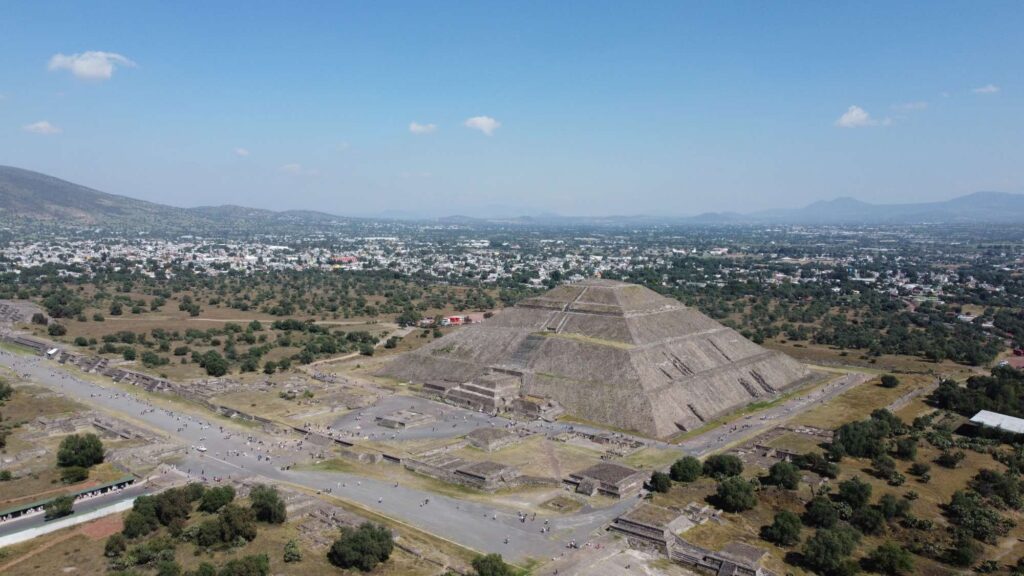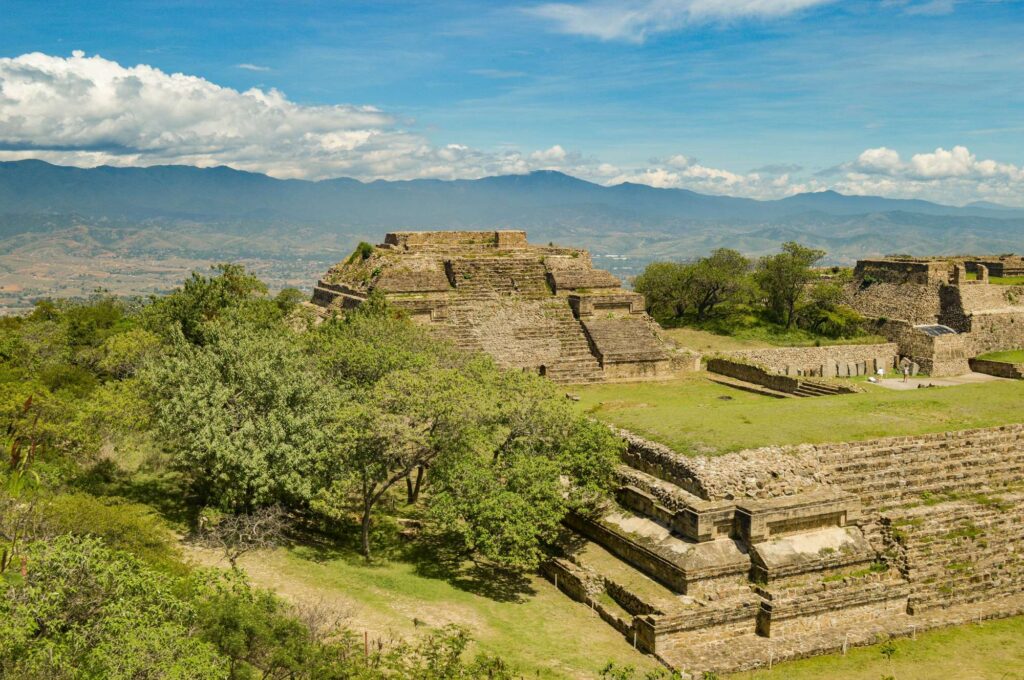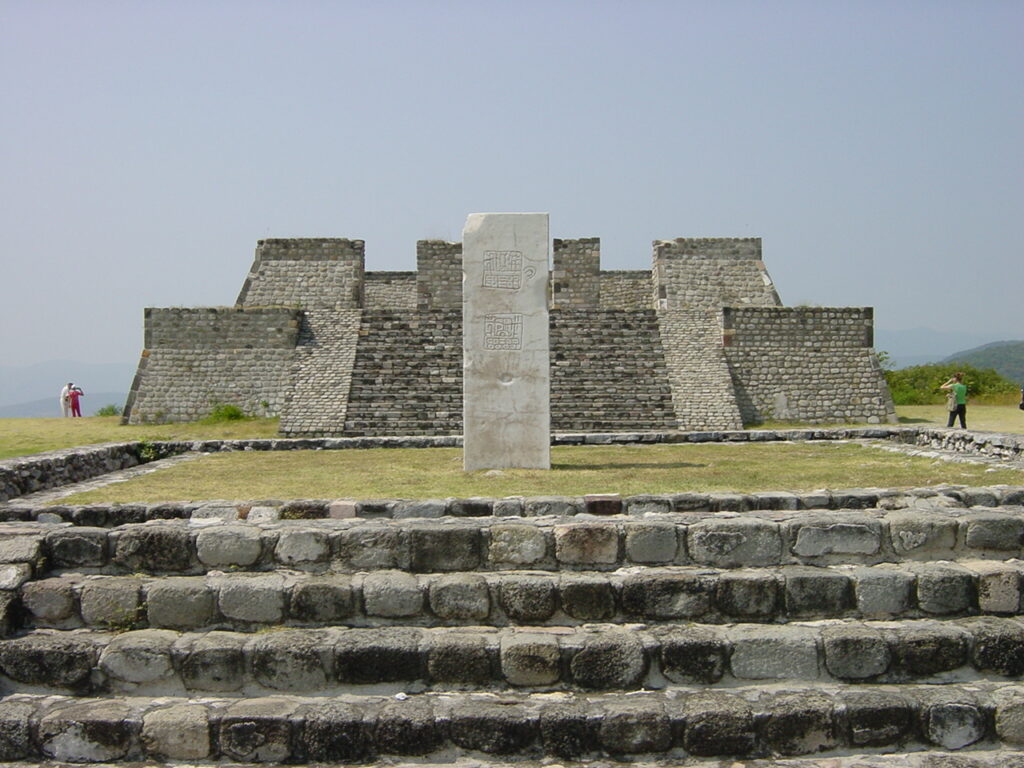Mexico is home to some of the most impressive and well-known pyramids in the world. These pyramids were built by some of the most advanced ancient civilizations in Mesoamerica, including the Mayans, the Aztecs, and the Zapotecs. These structures are not just architectural marvels, but they also provide insight into the beliefs, culture, and practices of these ancient civilizations. Let’s explore 11 of the best pyramids in Mexico, including their history, architecture, and cultural significance. Let’s dive in.
1. Chichen Itza
| Where: Yucatan, Peninsula When: November to April (peak season December to February) What: El Castillo, also known as Kukulcan or the Pyramid of Kukulcan |

Chichen Itza is one of the most famous archaeological sites in Mexico and is home to the iconic El Castillo pyramid, also known as the Temple of Kukulcan. This pyramid was built by the Mayans around 1000 CE and is located in the Yucatan Peninsula. El Castillo is a four-sided pyramid with a staircase on each side leading to a temple at the top. The pyramid is 24 meters tall and has 91 steps on each side, plus one additional step at the top, making a total of 365 steps, representing the solar year.
The architecture of El Castillo is a testament to the advanced engineering and mathematical skills of the Mayans. The pyramid is aligned with the movements of the sun and casts a shadow that resembles a serpent descending the staircase during the equinoxes. The interior of the pyramid is also impressive, with a series of chambers and passageways that were used for religious and ceremonial purposes.
Chichen Itza was a major center of Mayan culture and commerce, and it is believed that the city was home to as many as 50,000 people at its peak. In addition to the El Castillo pyramid, the city also features other impressive structures, including the Temple of the Warriors, the Great Ball Court, and the Observatory.
2. Teotihuacan
| Where: Located 48km northeast of Mexico City When: November to April What: The Pyramid of the Sun |

Photo by Anton Lukin on Unsplash
Teotihuacan is an ancient Mesoamerican city located in the State of Mexico, about 30 miles north of Mexico City. The city was built by the Teotihuacan people around 300 BCE and was one of the largest cities in the world at its peak, with a population estimated at around 100,000 people.
Teotihuacan features several pyramids, including the Pyramid of the Sun and the Pyramid of the Moon. The Pyramid of the Sun is the largest pyramid in Teotihuacan, standing at 65 meters tall. It was built in several stages, with the earliest construction dating back to around 100 BCE. The Pyramid of the Moon is slightly smaller, standing at 43 meters tall. It was built later than the Pyramid of the Sun, around 200 CE.
The architecture of Teotihuacan is characterized by the use of large stones and intricate carvings. The city also features several other impressive structures, including the Temple of the Feathered Serpent, the Palace of the Jaguars, and the Avenue of the Dead.
Teotihuacan was a major center of Mesoamerican culture and commerce, and it is believed that the city had a profound influence on the development of other civilizations in the region, including the Mayans and the Aztecs.
3. Tulum
| Where: Located in the state of Chiapas, around 128km from Cancun When: November to April What: El Castillo, but make sure to not miss the well-preserved coastal Mayan ruins! |
Tulum is a Mayan city located on the coast of the Yucatan Peninsula, about 80 miles south of Cancun. The city was built during the late Mayan period, around 1200 CE, and was a major center of trade and commerce.
Tulum features several impressive structures, including the Temple of the Wind God, which is a small pyramid located on a cliff overlooking the Caribbean Sea. The pyramid is only 7 meters tall, but its location and the stunning views it offers make it one of the most popular attractions in Tulum.
The architecture of Tulum is characterized by the use of plaster and stucco to decorate the facades of buildings. The city also features a large wall that surrounds the main structures, which was likely used for defensive purposes.
Tulum was a major center of Mayan culture and commerce, and it was one of the last cities to be abandoned after the arrival of the Spanish in the 16th century.
4. Monte Alban
| Where: Located in the state of Oaxaca When: November to April (Tip: cool temperatures in the early morning and evenings) What: Pyramid of the Moon |

Monte Alban is an ancient Zapotec city located in the state of Oaxaca. The city was built on a mountaintop and features several pyramids, including the Pyramid of the Sun and the Pyramid of the Moon.
The Pyramid of the Sun is the largest pyramid in Monte Alban, standing at 45 meters tall. It was built in several stages, with the earliest construction dating back to around 500 BCE. The Pyramid of the Moon is smaller, standing at 40 meters tall. It was built later than the Pyramid of the Sun, around 200 BCE.
The architecture of Monte Alban is characterized by the use of large stones and intricate carvings. The city also features several other impressive structures, including the Palace of the Columns, the Tomb of the Great Priest, and the Ball Court.
Monte Alban was a major center of Zapotec culture and commerce, and it is believed that the city played an important role in the development of the Mesoamerican civilization.
5. Palenque
| Where: Located in the state of Chiapas When: November to April (Tip: be prepared for high temperatures and humidity) What: Pyramid of the Moon |

Palenque is a Mayan city located in the state of Chiapas, in the southern part of Mexico. The city was built during the late Mayan period, around 600 CE, and was a major center of trade and commerce.
Palenque features several pyramids, including the Temple of the Inscriptions, which is the largest pyramid in Palenque. The pyramid is 25 meters tall and features nine levels, each with a chamber that was used for religious and ceremonial purposes.
The architecture of Palenque is characterized by the use of intricate carvings and stucco work, which adorn the facades of the buildings. The city also features several other impressive structures, including the Palace, the Temple of the Cross, and the Temple of the Sun.
Palenque was a major center of Mayan culture and commerce, and it is believed that the city had a profound influence on the development of other civilizations in the region.
6. Calakmul
| Where: Located in the state of Campeche When: November to April (Tip: be prepared for high temperatures and humidity) What: Structure of the Double Headed Serpent (Structure 2) |

Calakmul is a Mayan city located in the state of Campeche, in the southern part of Mexico. The city was built during the late Mayan period, around 600 CE, and was a major center of trade and commerce.
Calakmul features several pyramids, including the Great Pyramid, which is one of the largest pyramids in Mexico. The pyramid is 55 meters tall and features several levels, each with a chamber that was used for religious and ceremonial purposes.
The architecture of Calakmul is characterized by the use of large stones and intricate carvings. The city also features several other impressive structures, including the Palace and the Ball Court.
Calakmul was a major center of Mayan culture and commerce, and it is believed that the city played an important role in the development of the Mesoamerican civilization.
7. Ek Balam
| Where: Located in the Yucatan Peninsula When: November to April (Tip: be prepared for high temperatures and humidity) What: The Acropolis |

Ek Balam is a Mayan city located in the state of Yucatan, in the northern part of Mexico. The city was built during the late Mayan period, around 600 CE, and was a major center of trade and commerce.
Ek Balam features the Acropolis, which is a massive pyramid that was built in several stages. The pyramid is 31 meters tall and features several levels, each with a chamber that was used for religious and ceremonial purposes.
The architecture of Ek Balam is characterized by the use of intricate carvings and stucco work, which adorn the facades of the buildings. The city also features several other impressive structures, including the Ball Court and the Palace.
Ek Balam was a major center of Mayan culture and commerce, and it is believed that the city had a profound influence on the development of other civilizations in the region.
8. Coba
| Where: Located in the state of Quintana Roo When: November to April (Tip: be prepared for high temperatures and humidity) What: Nohoch Mul Pyramid |

Coba is a Mayan city located in the state of Quintana Roo, in the eastern part of Mexico. The city was built during the late Mayan period, around 600 CE, and was a major center of trade and commerce.
Coba features the Nohoch Mul pyramid, which is one of the tallest pyramids in the Yucatan Peninsula. The pyramid is 42 meters tall and features several levels, each with a chamber that was used for religious and ceremonial purposes.
The architecture of Coba is characterized by the use of large stones and intricate carvings. The city also features several other impressive structures, including the Ball Court and the Observatory.
Coba was a major center of Mayan culture and commerce, and it is believed that the city played an important role in the development of the Mesoamerican civilization.
9. Xochicalco
| Where: Located in the state of Morelos When: November to April (Tip: cool temperatures in the early morning and evenings) What: The Pyramid of Feathered Serpent |

Xochicalco is an ancient city located in the state of Morelos, in the southern part of Mexico. The city was built during the late Classic period, around 700 CE, and was a major center of trade and commerce.
Xochicalco features the Pyramid of the Feathered Serpent, which is a unique pyramid that features intricate carvings. The pyramid is 20 meters tall and features several levels, each with a chamber that was used for religious and ceremonial purposes.
The architecture of Xochicalco is characterized by the use of large stones and intricate carvings. The city also features several other impressive structures, including the Observatory and the Temple of the Plumed Serpent.
Xochicalco was a major center of Mesoamerican culture and commerce, and it is believed that the city had a profound influence on the development of other civilizations in the region.
10. El Tajin
| Where: Located in the state of Veracruz When: November to April (Tip: be prepared for high temperatures and humidity) What: The Pyramid of Niches |
El Tajin is an ancient city located in the state of Veracruz, in the eastern part of Mexico. The city was built during the late Classic period, around 600 CE, and was a major center of trade and commerce.
El Tajin features several pyramids, including the Pyramid of the Niches
continue, which is one of the most unique pyramids in Mexico. The pyramid is 18 meters tall and features over 365 niches, each with a small statue inside. The pyramid was likely used for religious and ceremonial purposes.
The architecture of El Tajin is characterized by the use of intricate carvings and stucco work, which adorn the facades of the buildings. The city also features several other impressive structures, including the Ball Court and the Temple of the Columns.
El Tajin was a major center of Mesoamerican culture and commerce, and it is believed that the city had a profound influence on the development of other civilizations in the region.
11. Tzintzuntzan
| Where: Located in the state of Michoacan When: November to April (Tip: cool temperatures in the early morning and evenings) What: Las Yacatas (rounded, pyramid-shaped like buildings) |

Tzintzuntzan is an ancient city located in the state of Michoacan, in the western part of Mexico. The city was built by the Purépecha people, a civilization that was contemporaneous with the Aztecs and the Mayans.
Tzintzuntzan features several pyramids, including the Yacatas, which are unique pyramid-like structures that were used for religious and ceremonial purposes. The Yacatas are made of stone and feature several levels, each with a chamber that was used for different purposes.
The architecture of Tzintzuntzan is characterized by the use of stone and intricate carvings. The city also features several other impressive structures, including the Palace and the Temple of the Sun.
Tzintzuntzan was a major center of Purépecha culture and commerce, and it is believed that the city played an important role in the development of the Mesoamerican civilization.
The pyramids of Mexico are not just architectural marvels, but they also provide insight into the beliefs, culture, and practices of the ancient civilizations that built them. From the Mayans to the Aztecs to the Purépecha, these civilizations left a lasting legacy that can still be seen and felt in Mexico today.
Whether you are interested in history, architecture, or culture, the pyramids of Mexico offer a unique and fascinating glimpse into the past. So if you have the opportunity to visit Mexico, be sure to explore these incredible structures.




